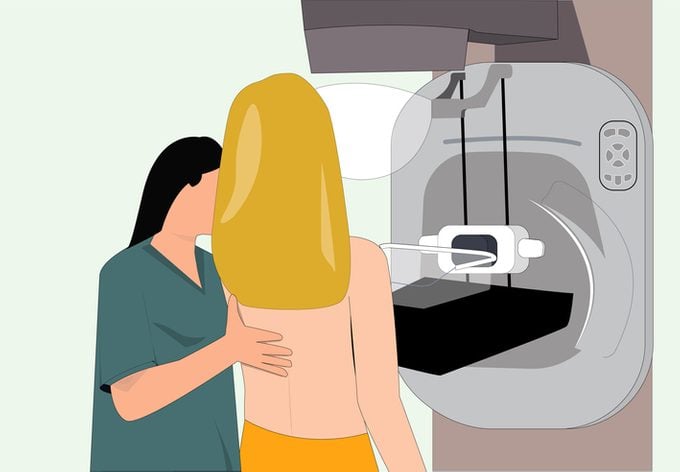The FDA Just Released a New Requirement for Mammograms
Updated: Mar. 17, 2023

The federal regulation offers live-saving information to patients.
Nearly every American has been affected in some way by breast cancer. Whether you’re one of the 266,400 Americans diagnosed each year, or a caretaker or loved one, we all have felt the gut-wrenching impact of this deadly disease. This is because breast cancer is one of the most common varieties of cancer, with a 13% chance of women and AFAB (assigned female at birth) individuals developing it in their lifetime. Men can also develop breast cancer, as can individuals on hormone replacement therapy (HRT), including transgender women.
However, thanks to a new regulation from the U.S. Food and Drug Association (FDA), we have reason to be optimistic. As with all cancers, the strongest tool we have in fighting them is early detection. For breast cancer, this means getting regular mammograms, and as of March 9, 2023, women will be getting more information than ever before from these vital scans. Here’s what you need to know before booking your next appointment.
What is the new mammogram requirement?
As of this March, all mammogram facilities in America are required to tell individuals if they have dense breast tissue. While this has already been a requirement in more than half of U.S. states, this is the first time this communication has been federally required. Facilities have 18 months to comply with this new ruling.
What is dense breast tissue?
Dense breast tissue is the supportive tissue in the breast, as opposed to the fatty tissue. On a mammogram image, dense breast tissue appears as white spots or shading, as demonstrated on the Mayo Clinic chart here. It is very common for individuals to have some dense breast tissue, with about half of people with breasts reporting notable amounts. According to Dr. Hal Burstein, a breast oncologist at Dana-Farber Cancer Institute, in an interview with ABC News, “[d]ense breast tissue is a common finding on mammograms, especially in younger women.”
Does dense breast tissue cause breast cancer?

While higher breast density isn’t an exact predictor of breast cancer, it is one risk factor. The FDA’s Chief Medical Officer Dr. Hilary Marston explains: “It has been known for a long time that [dense breast tissue] makes it more difficult to see a cancer on a mammogram when it exists. What’s evolved more recently in the science is an understanding that having dense breast tissue in and of itself is an independent risk factor for breast cancer.” As such, the FDA is ensuring that anyone who receives a mammogram has access to this critical information.
Can I test myself for dense breast tissue?
Unfortunately, according to Marston, self-exams will not work: “You can’t tell just from the feel of your breasts whether [they] are dense or not. This is really a finding that is seen on mammography.” To that end, be sure to regularly schedule your mammograms at a local facility. According to the CDC and the U.S. Preventative Services Task Force, those aged 50 to 74 years old should get a mammogram every two years, and those aged 40 to 49 should consult with their doctors to determine an appropriate frequency.
What should I do if my mammogram shows dense breast tissue?
If your mammogram shows dense breast tissue, don’t panic just yet. Again, this is just one piece of information. The best move is to work with your doctor to schedule further scans, such as more frequent mammogram screenings and/or additional imaging, like an MRI or ultrasound. This will help you and your doctor get the full picture of your breast health so that in the worst-case scenario, any cancerous tissue can be caught and fought early.
Get The Healthy @Reader’s Digest newsletter and follow The Healthy on Facebook, Instagram, and Twitter. Keep reading:
















